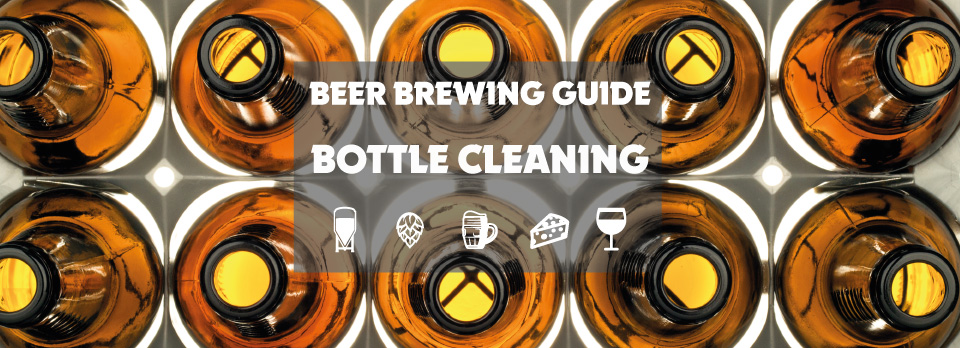Bottle cleaning is essential for successful secondary fermentation in the bottle and subsequent enjoyment. New and used bottles have different cleaning requirements. ‘Speciality bottles’ such as swing-top bottles and a wide variety of bottle shapes have their own peculiarities that need to be taken into account. Find out in this blog article what you need to look out for with the different bottles and how to keep your bottles safe and germ-free for bottling
General information
We advise against disinfecting the bottles by heating them in the oven! This can cause microcracks in the bottles, which can lead to bottle bursting during secondary fermentation.
When using Puro Oxi: If you fill a bottle with Puro Oxi with warm water, the solution will foam up considerably. Avoid scalding at all costs and provide cold, running water in the immediate vicinity
Glass shatters into many individual pieces when it bursts. Always wear safety goggles and gloves when cleaning bottles to protect yourself from cuts from broken glass and burns from cleaning agents
We usually recommend brown bottles for bottling beer to avoid the well-known ‘light flavour’. This is caused by UV rays reacting with the ingredients of the hops. The darker the glass, the more difficult it is for the UV rays to penetrate
We recommend avoiding surfactants (detergents) when cleaning bottles. These not only foam up a lot and are difficult to remove without leaving any residue, they also destroy the foam and flavour of the beer
Cleaning new bottles
Cleaning new bottles for bottling beer is crucial for the quality of the end product. Before the bottles are used for the first time, it is advisable to clean them thoroughly. This can be done by washing them with boiling water to remove any germs and bacteria. This simple step ensures that the beer matures optimally in the fresh bottles and can develop its full flavour. To be on the safe side, you can also clean the bottles with a slight dilution of the oxidative cleaning agent Puro Oxi. This agent also removes odours very effectively.
Cleaning used bottles
If you want to use used bottles for bottling beer, it is advisable to rinse them with water once after drinking to make cleaning easier later on. To remove impurities, you should first carry out a mechanical cleaning using a bottle brush. It is helpful to soak the bottles in lukewarm water beforehand to make it easier to remove dirt or other impurities. Once the bottles have been pre-cleaned, they are disinfected. To do this, simply dissolve the PURO OXI cleaning agent at a dosage of 4g/L in warm to hot water, leave the bottles to soak for 3-5 minutes and then allow to drain.
Cleaning swing-top bottles
Particular attention must be paid to cleaning the rubber seal of swing-top bottles! Biofilm tends to form here, which can cause infections in the beer.
A major advantage of secondary fermentation in swing-top bottles is that you can easily release some pressure from the bottle by carefully pressing the rubber seal upwards with both thumbs.
Cleaning crown caps and seals
While used rubber seals on swing-top bottles usually have to be cleaned individually, this is not necessary for new crown caps or newly packaged swing-tops.
We recommend using an alcohol-based disinfectant in a spray bottle immediately before use. Suitable agents include Ecolab P3-alcodes and CMT-Spray-Away.
Equipment for cleaning bottles
The easiest way to clean the bottles mechanically is with a hand brush. A pipe brush such as the Vikan company is particularly suitable for the neck of the bottle and a brush with protruding bristles at the end is particularly effective for the base of the bottle.
Bottle washers’ are an alternative, usually at a medium price. These are available in various designs and price ranges. The water pressure generated by these bottle washers results in significantly more efficient cleaning and safer filling.
Finally, there are also devices such as the bottle fairy, which can be used to clean the bottles conveniently and easily in the dishwasher at home. However, care must be taken here to use the right detergent and to avoid surfactants as far as possible.
Braumarkt Beer Brewing Guide


